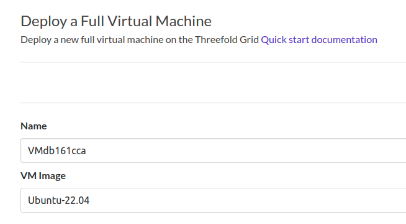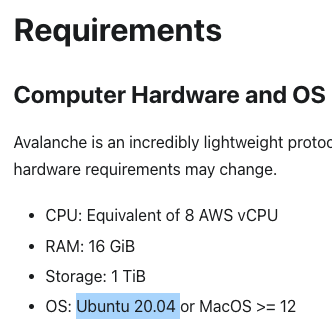Deploy Blockchain Nodes On The Threefold Grid
Hi Threefolders,
There’s so much that can be done on the Threefold Grid.
This post is an invitation to Threefolders.
We want to build a repertoire of all the blockchain nodes that can be deployed on the TF Grid, and then create accessible documentation for anyone to use.
Please let us know what you think.
Share with us your ideas and this list might just grow!
As @ParkerS pointed out in this post, some blockchain nodes are more accessible than others.
We also have great tutorials on how to deploy blockchain nodes, but the Grid has evolved since and thus some tutorials would need to be updated with the new Grid features, such as flists and the TF Playground.
List of Blockchain Nodes to Deploy on the Threefold Grid
Blockchain Nodes as Weblet Deployments
- Presearch
Blockchain Nodes as Flist with a Micro VM
- Neo
- Dash
- Ava
- Matic
- TomoChain
- DigiByte
- Hydra
- Flux
- …
- Any idea? Please share your thoughts and the list will be updated
Tutorials and Methods
The Full VM Method
You can simply deploy a full VM on the TF Grid, for example, Ubuntu 20.04, and follow the standard blockchain documentation to deploy your blockchain node.

For example, with AVAX, Ubuntu 20.04 can be used as the OS:

The VM+Flist Method
As @ParkerS stated in the post mentioned above, one of the easiest ways to deploy a blockchain node, is to take the docker file, turn it into an flist, and then deploy the flist via a micro vm on the Playground.
Note: when a flist is converted from a docker, it is then accessible on the TF Grid. You can find flists on the hub.grid.tf page.

The tutorials would then be very similar, only the flist would change.
It would be very accessible and easy to understand for newcomers.
They would search: deploy blockchain XYZ, and find the corresponding tutorial.
Note: any docker can be converted in an flist, so we would convert all the dockers into flists to make the tutorials even easier.
General Steps to Deploy a Blockchain Node
- Dashboard Preparation
- Launch dashboard.grid.tf
- Create an account with polkadot.js
- Fund TFT in your TF Connect wallet (Android, iOS)
- Transfer TFT from Stellar chain to TF chain (portal->swap)
- Threefold Playground (play.grid.tf)
- Set your profile manager
-
Deploy a micro VM
- VM Image: Other
- FList: https:hub.grid.tf/{Blockchain-Node-FList-Path}
- Set the blockchain node
- Follow the specific blockchain node documentation
Blockchain Nodes and Weblet Deployments
When there is a lot of interest for a given blockchain node, the Threefold Dev team could then make an even easier to use Weblet to deploy the node. A good example is the Presearch blockchain node.
This is the basic of what could be done. See this as a draft.
What do you Threefolders think?
If you’d like to see a specific tutorial for a given blockchain, tell us!
